GL Announces Enhanced INAP & CAP Protocol Emulators
Welcome to another September, 2016 issue of GL Communications' Newsletter providing information and insight into our enhanced MAPS™ CAP and MAPS™ INAP Protocol Emulators. These two protocol emulators have been enhanced to include automatic handling of SCCP parameters and low balance call flow scenarios.
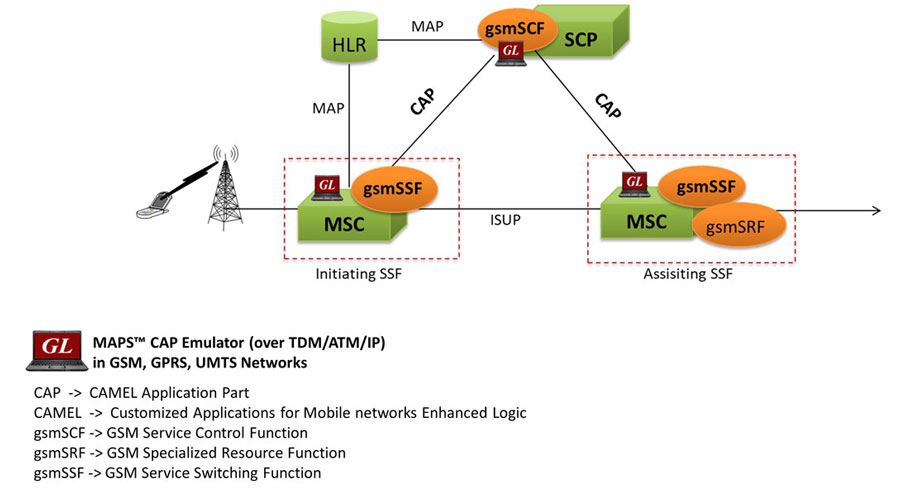
Overview
The Intelligent Network (IN) is a network architecture used in fixed as well as mobile telecom networks. It allows operators to provide value-added services in addition to the standard telecom services such as PSTN, ISDN and GSM services on mobile phones. The intelligence is provided by network between functional entities such as Service Control Function (SCF) and Service Switching Function (SSF). Intelligent Network Application Part (INAP) and Customized Applications for Mobile Networks Enhanced Logic Application Part (CAP) are the protocols used in Intelligent Networks. INAP is for fixed networks whereas CAP is extended version of INAP and is used for mobile networks.
GL's Message Automation & Protocol Simulation (MAPS™) is an advanced protocol simulator/tester for INAP services. The tester supports testing network elements gsmSCF and gsmSSF, error tracking, regression testing, conformance testing, and load testing/call generation. It is able to run pre-defined test scenarios against INAP test objects in a controlled & deterministic manner.
GL's MAPS™ CAP Emulator can emulate CAP supplementary services such as unified messaging, prepaid, and toll-free (Freephone). These services are available in TDM and IP based GSM, GPRS, and UMTS networks. CAP information flow is defined between functional entities such as Service Control Function (SCF)and Service Switching Function (SSF) distributed across network executing services.
Call Simulation – Typical Call Procedure
Important Features
- Multi-protocol, Multi-interface Simulation
- Test Service Usage Charging for Voice, Data, SMS etc
- Cost-of-call verification through balance check
- Test Premium Calling and Toll-Free Services
- Provides fault insertion, and erroneous call flows testing capability
- Performance testing, Load testing, Functional testing, Regression testing and Conformance testing of network elements.
- Ready scripts make testing procedure simpler, less time consuming and hence time to market products
- Test response of network against protocol message modification, or corruption
- Inter-operability testing of networks
Call Generation and Reception
MAPS™ CAP/INAP is configured as gsmSSF node initiating the CAP/INAP procedures. The application can also be configured as DUT (gsmSCF) at the network terminal receiving the procedure specific request messages and responding back to the gsmSSF. All CAMEL services are supported in MAPS™.
Call Statistics
By default, all call handling scripts (irrespective of the type of the functions) are assessed by MAPS™ to provide statistical information about Total Calls, Active Calls, Completed Calls, Passed Calls, Failed Calls, and Calls/Sec. It is also possible to characterize the statistical information under different groups of call handling scripts under a unique heading. In addition, Call Generation and Call Reception windows provide useful call status & script execution results.
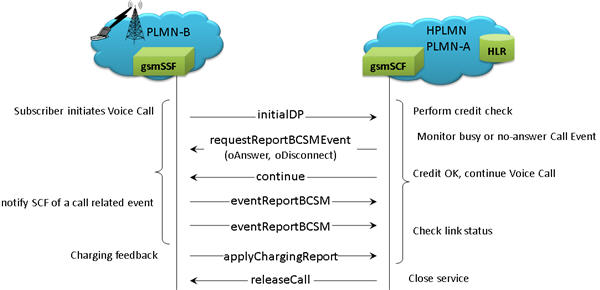
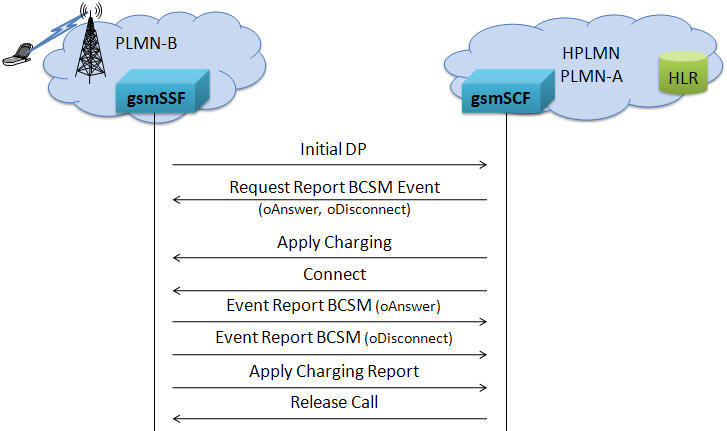
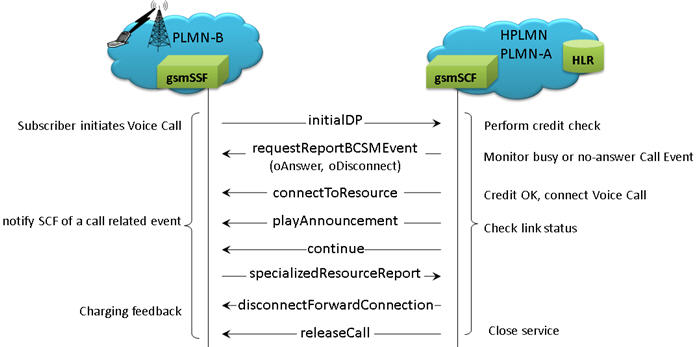

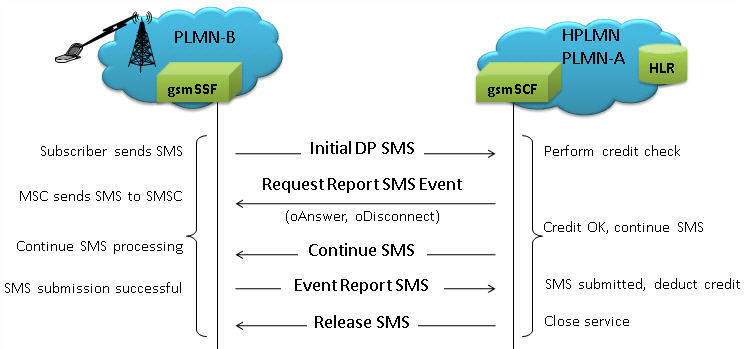
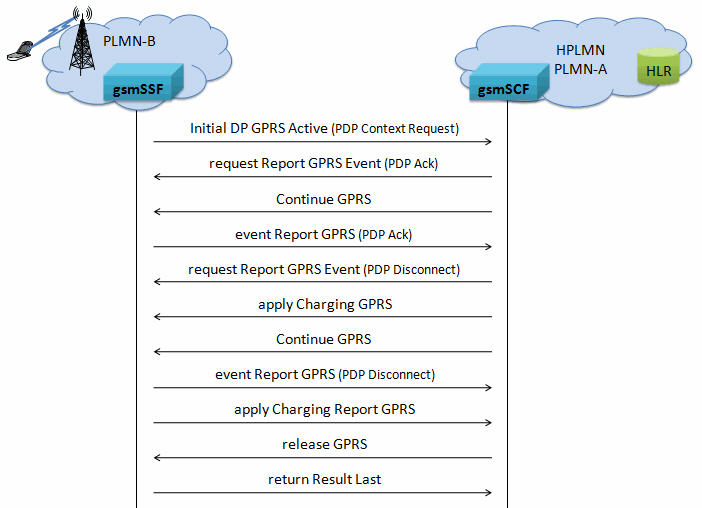
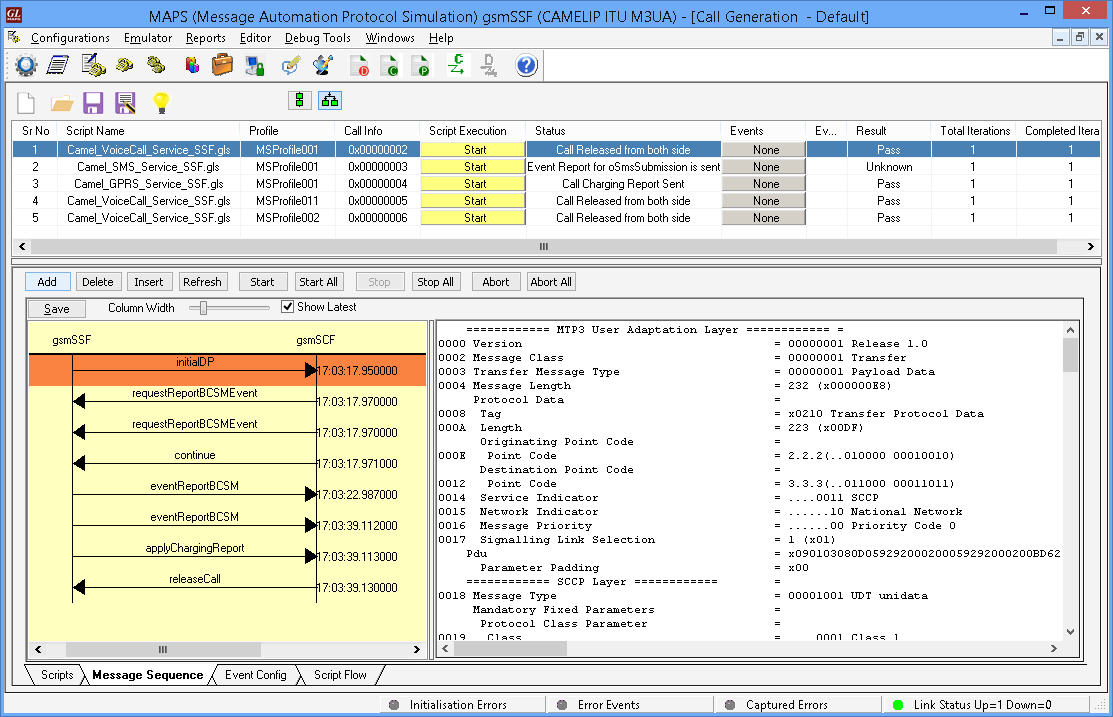
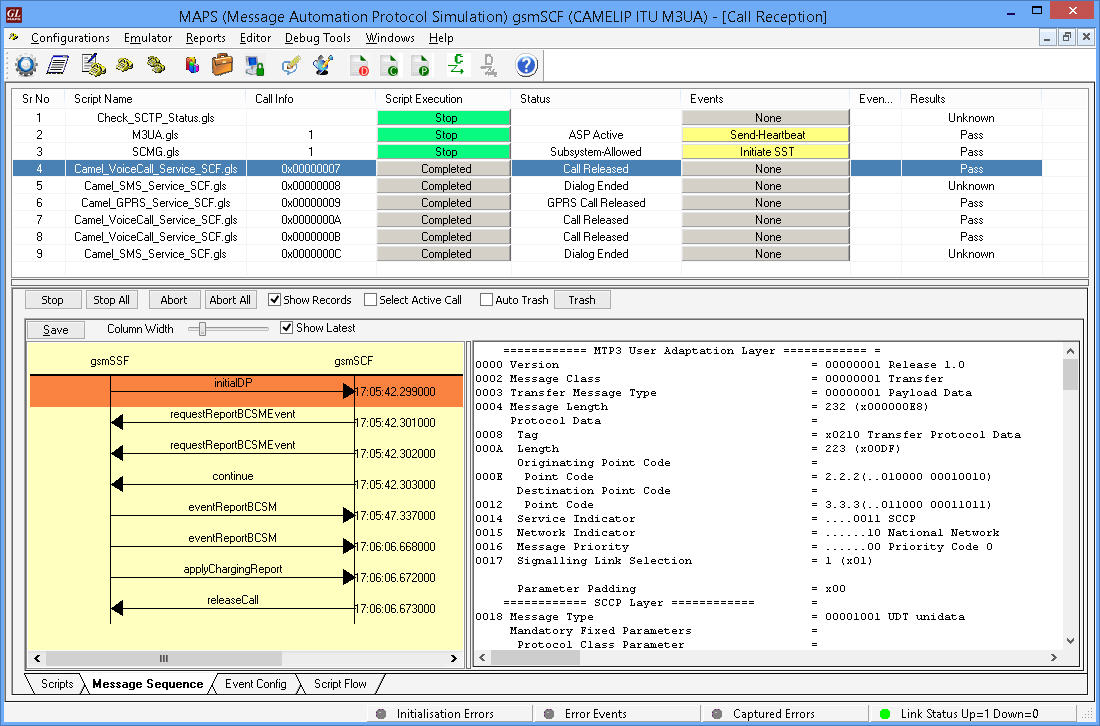

 Back to Newsletter Index Page
Back to Newsletter Index Page